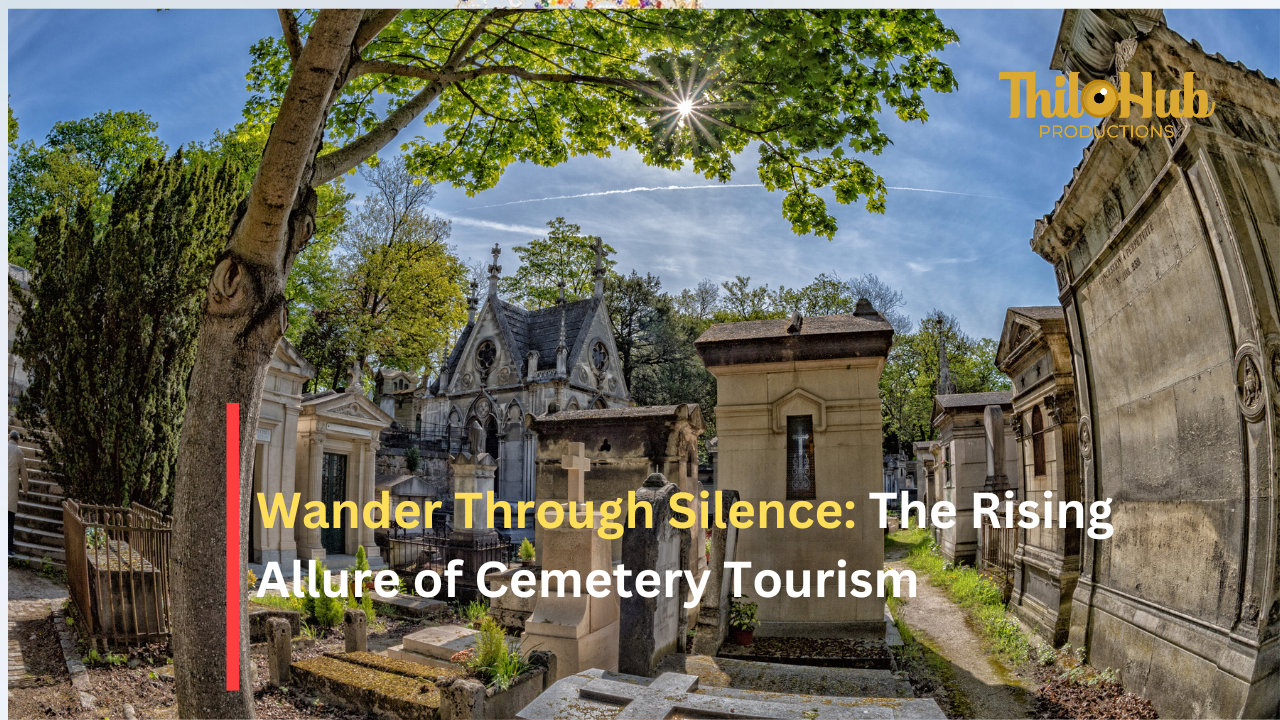At the heart of cosmopolitan cities are hidden worlds of stone and shadow—cemeteries that are not only where the eternal sleep. These tranquil enclaves of the past are open-air museums, sculpture gardens, and time capsules that share whispers of bygone days.
This recent trend in travel—cemetery tourism—is bringing tourists not to mourn, but to study. In Paris to Buenos Aires and Tokyo to New York, tourists walk between the tombs in reverence and admiration, discovering beauty and heritage at places that were only visited with sorrow before.
Walking with Legends: Père Lachaise, Paris
Tucked away in the northeast quadrant of Paris, Père Lachaise Cemetery is a somber labyrinth of cobblestone passageways and ivy-clad mausoleums. Dating back to 1804, this 44-hectare city of the dead is the permanent home of over a million deceased—and 3.5 million visitors each year stop by.
Here, lipstick kisses are pressed into Oscar Wilde’s tomb by literary enthusiasts. Jim Morrison’s humble but commanding grave is smothered in graffiti tribute and candles. But beyond these legends, Père Lachaise spreads before it to be uncovered in layers of Parisian history—world war heroes, Holocaust memorials.
Each mausoleum is a story, Gothic romance and sculptural beauty entwined. To stroll these boulevards is to enjoy an intimate conversation with the past.
Marble Memories: La Recoleta, Buenos Aires
In the heart of Argentina’s capital lies La Recoleta Cemetery, where marble mausoleums loom like mini cathedrals. Renowned for its lavish tombs and neoclassical vaults, this cemetery is actually a city within a city—with narrow streets, domes, and opera-like sculptures.
Eva Perón, the iconic First Lady of Argentina, rests here in a surprisingly modest tomb. Her grave remains a pilgrimage point, but beneath “Evita,” there are tales of nobility, betrayal, duels, and ghost stories that echo across the decades.
La Recoleta is more than a cemetery—it’s a history of Argentine bravado and the human need for immortality in stone.
Why Cemeteries? A New Way to Travel
It sounds peculiar—vacationing in cemeteries—but cemetery tourism is more storytelling than mortality. Each name, each epitaph, has a story of lives forged by love, war, art, and revolution.
These are the sites to hold:
Unvarnished history
Architectural masterworks
Sociocultural insight
In contrast to crowded tourist sites, cemeteries offer calm and contemplation. They reveal a city’s character—through memorialization instead of spectacle.
Global Pilgrimage: Cemeteries Worldwide
Cemetery tourism is global now, inviting travelers to explore heritage through holy land:
Highgate Cemetery, London – A Gothic treasure with tombs of Karl Marx and George Eliot.
Green-Wood Cemetery, New York – Hills, lakes, and 19th-century statuary blending history and nature.
Okunoin Cemetery, Japan – A mystical forest stroll in Koyasan lined with over 200,000 tombstones leading to the mausoleum of monk Kobo Daishi.
Each cemetery addresses the way cultures mourn the dead—and celebrate life.
The Art of the Eternal
Cemeteries are treasure troves for art and architecture lovers. Some tombs are masterpieces of design, decorated with:
* Baroque, Neo-Gothic, or Art Nouveau patterns
* Intricate ironwork and stained glass
* Angel, lion, saint, and myth creature sculptures
Photographers and writers discover these locations as creative treasure chests—where light, shadow, and silence create indelible pictures and stories.
A Responsible Journey
While cemetery tourism grows in popularity, it is essential to travel there with reverence and sensitivity. Some cemeteries allow photography, guided tours, or even ghost walks—but always in the spirit of reverence. They are places of reverence.
The intent is not morbid curiosity—but respectful interaction with history, memory, and art.
Life Through Death
In an era of rapid transportation and social media bucket lists, cemetery tourism is more. It challenges travelers to do the opposite: slow down, hear, and become engaged.
In those hallowed grounds, we don’t just learn
about the deceased—we ponder what it is to be alive.
So the next time you’re in a new town, stroll through the wrought iron gates of its cemetery. Amid the moss-covered gravestones and statuesque silences, you may hear the most human tales of all.

